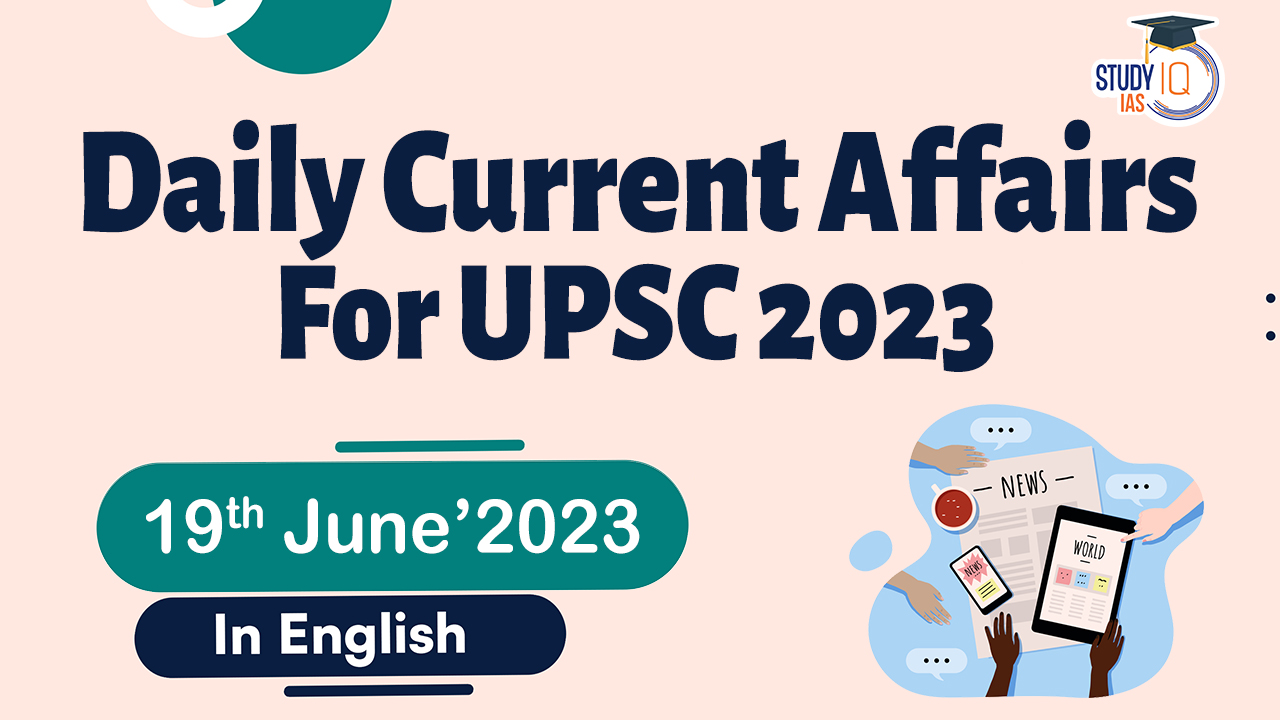Daily Current Affairs for UPSC 2023
Q) Which one of the following Article of the Indian Constitution contains the provision about Uniform Civil Code (UCC)?
- Article 40
- Article 44
- Article 45
- Article 48
Daily Current Affairs for UPSC – 17 June April 2023
Explanation:
- Option (1) is incorrect: Article 40 of the Constitution which enshrines one of the Directive Principles of State Policy lays down that the State shall take steps to organise village panchayats and endow them with such powers and authority as may be necessary to enable them to function as units of self-government.
- Option (2) is correct: The Uniform civil code is mentioned in article 44 of the Indian constitution of 1950 as a directive principle of state policy (DPSP). Article 44 states that “The State shall endeavour to secure the citizens a Uniform Civil Code (UCC) throughout the territory of India.”
- Option (3) is incorrect: Article 45 of the Constitution which enshrines one of the Directive Principles of State Policy lays down that the State state shall endeavor to provide early childhood care and education for all children until they complete the age of six years.
- Option (4) is incorrect: Article 48 of the Constitution which enshrines one of the Directive Principles of State Policy lays down that the State shall endeavour to organise agriculture and animal husbandry on modern and scientific lines.
Q) Consider the following statements about ‘iCET’ initiative:
- It is connected to the development of cutting-edge technology in the space and defence sector.
- It is a joint programme of India and ASEAN countries.
- It is operated by the Ministryof Electronics and Information Technology.
Which of the statements given above is/are not correct?
- 1 and 3 only
- 2 only
- 2 and 3 only
- 1, 2 and 3
Explanation:
- Statement 1 is correct but statements 2 and 3 are incorrect: Initiative for Critical and Emerging Technologies (iCET) initiative was launched by India and the US in May 2022 and is being run by the National Security Councils of both countries. Under iCET, both countries have identified six areas of cooperation which would include co-development and co-production. The six areas for cooperation are Scientific research and development, Quantum and artificial intelligence, Defence innovation, Space, Advanced telecom which would include things like 6G and Semiconductors. The objective is to provide cutting edge technologies to the rest of the world which are affordable.
Q) With reference to ‘light pollution’, consider the following statements:
- The satellites can easily catch the blue light emitted from LEDs and the pollution caused by it.
- The ‘skyglow’ is the light scattered and reflected by solid or liquid particles in the atmosphere reducing sky visibility at night.
- The International Dark-Sky Association is a non-profit organization that works to protect the night skies by advocating for responsible outdoor lighting.
How many of the statements given above is/are correct?
- Only one
- Only two
- All three
- None
Explanation:
- Statement 1 is incorrect but statement 2 is correct: According to a study, ‘Sky Glow’ (a form of light pollution) has increased by nearly 10 per cent annually in the last decade. The 10% annual increase of sky glow is much higher than satellite-based estimates, which show that the sky brightness has increased by 2 per cent a year from 2012-2016. Satellites do not catch blue light emitted from LEDs, which have increasingly grown popular in the last decade, the study noted. Due to increased sky glow, 30 per cent of the global stargazers have been robbed of a good view of stellar bodies. The reduction in night sky visibility is a result of “skyglow,” upward-directed light emanating from poorly designed or directed lamps and security floodlights. This wasted light is scattered and reflected by solid or liquid particles in the atmosphere and then returned to the eyes of people on the ground, obliterating their view of the night sky. The effect of skyglow from a town or city is not necessarily localized; it can be observed far from the main source.
- Statement 3 is correct: The International Dark-Sky Association (IDA) is a non-profit organization that works to protect the night skies for present and future generations by advocating for responsible outdoor lighting and promoting dark sky places. The Globe at Night program is an international citizen-science campaign to raise public awareness of the impact of light pollution.
Q) Which of the following objective can be achieved using Miyawaki method of plantation?
- Urban greening
- Rapid forest establishment
- Biodiversity conservation
- Low maintenance of forest developed
Select the correct answer using the code given below:
- 1 and 2 only
- 3 only
- 1, 2 and 3 only
- 1, 2, 3 and 4
Explanation:
Option (4) is correct: The significance of Miyawaki method of plantation:
- Rapid forest establishment: Compared to traditional afforestation techniques, forests created using this method are said to grow 10 times faster and become 30 times denser.
- Biodiversity conservation: The Miyawaki Method prioritizes the use of native plant species, resulting in the restoration of biodiversity in degraded areas.
- Climate change mitigation: Forests created using the Miyawaki Method contribute to mitigating climate change.
- Urban greening: The Miyawaki Method is particularly valuable for urban areas where space is limited.
- Low maintenance requirements: Once established, forests created using the Miyawaki Method are relatively self-sustaining.
Q) Consider the following statements:
- It is situated in the Mayurbhanj district of Odisha.
- It has been part of the UNESCO World Network of Biosphere Reserves since 2009.
- Two tribes, the Erenga Kharias and the Mankirdias inhabit the reserve’s forests and practice traditional agricultural activities.
- The park has vegetation ranging from tropical semi-evergreen forests, tropical moist deciduous forests, dry deciduous hill forests, high-level sal forests and sprawling meadows.
Which one of the following National Park/ Wildlife Sanctuary is described in the statements given above?
- Similipal National Park
- Chilika Wildlife Sanctuary
- Sunabeda Wildlife Sanctuary
- Bhitarkanika National Park
Explanation:
- Option (1) is correct: Simlipal National Park is situated in the Mayurbhanj district of Odisha and derives its name from the silk cotton tree which is locally called Simul. It was formally designated a tiger reserve in 1956, brought under Project Tiger in 1973, and was declared a biosphere reserve in 1994. It has been part of the UNESCO World Network of Biosphere Reserves since 2009. The park includes three protected areas of Similipal Tiger Reserve, Hadagarh Wildlife sanctuary and Kuldiha wildlife sanctuary. The park has vegetation ranging from tropical semi-evergreen forests, tropical moist deciduous forests, dry deciduous hill forests, high-level sal forests and sprawling meadows. Two tribes, the Erenga Kharias and the Mankirdias inhabit the reserve’s forests and practice traditional agricultural activities. Other dominant tribes in the region include the Ho, Gonda and Munda, among others.


 Earthquake in Myanmar, Causes, Impact an...
Earthquake in Myanmar, Causes, Impact an...
 India’s Deep Sea Technology, Need and ...
India’s Deep Sea Technology, Need and ...
 Daily Quiz 29 March 2025
Daily Quiz 29 March 2025





















